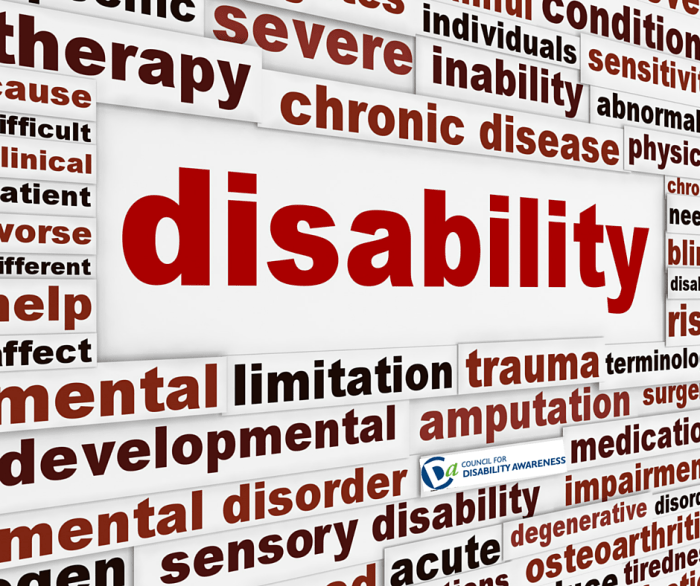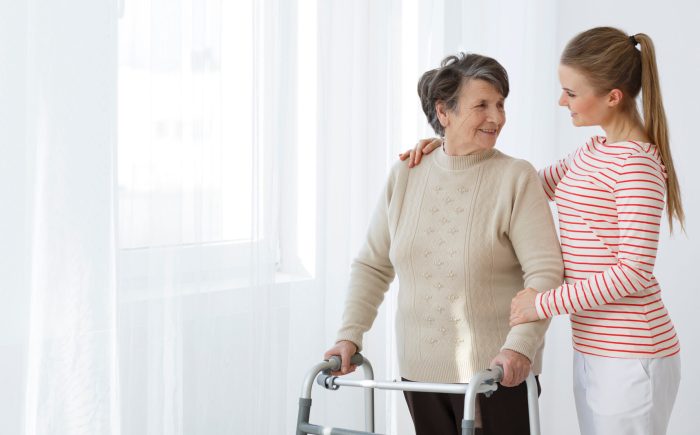
Welcome to the wacky world of Disability where we tackle everything from asthma to autism and back pain that packs a punch! It’s like a health carnival with a twist, where we explore how disabilities shape our lives in ways that are as multifaceted as a Rubik’s Cube.
We dive into the nitty-gritty details of how these disabilities impact not just health, but lifestyle and medical care too. From strategies that turn everyday challenges into triumphs to the importance of accessible medical options, we’re here to make sense of it all while keeping the spirits high!
Disability and Health
The intricate dance between disability and health often resembles a waltz between a rubber chicken and a serious business meeting—awkward, yet unavoidable. Disabilities can significantly shape health outcomes, and the interplay between various conditions often leads to a tapestry of challenges and triumphs that are as varied as the colors in a crayon box. Let’s unpack this with a dash of humor, a sprinkle of facts, and a whole lot of heart.
Asthma as a Disability and Health Outcomes
Asthma, while not always classified as a disability in the traditional sense, can lead to significant health ramifications for those whose daily lives are disrupted by it. The relationship between asthma and various disabilities can be quite complex, often resembling a sitcom where one character overreacts to everything. Individuals with disabilities who also experience asthma may encounter hurdles like increased hospital visits, which can feel like an uninvited guest at a party.
Here are key aspects to consider:
- Respiratory Challenges: Asthma can exacerbate existing health conditions in people with disabilities, leading to difficulties in managing both the disability and asthma simultaneously.
- Physical Activity Limitations: Many individuals with disabilities might already find physical activity challenging; asthma can further hinder their ability to engage in exercise, impacting their overall health.
- Emotional and Mental Health: The anxiety associated with having asthma attacks can add another layer of stress, which is often already present due to other disabilities.
“Asthma doesn’t just take your breath away; it sometimes takes your plans and leaves you gasping for air and a new activity.”
Impact of Autism on Health and Well-Being
Autism spectrum disorder (ASD) is a multifaceted disability that influences not only social interactions but also the overall health and well-being of individuals. Much like a surprising plot twist in a movie, autism can bring about unexpected challenges and strengths. Individuals with autism may experience unique health challenges, including:
- Co-occurring Conditions: Many individuals with autism face additional health issues such as gastrointestinal disorders, epilepsy, or sleep disturbances, making health management a full-time job.
- Social and Emotional Health: Difficulties in social communication can lead to isolation or anxiety, which can negatively affect mental health and overall well-being.
- Sensory Sensitivities: These sensitivities can impact diet and exercise, as individuals might shy away from certain foods or activities that are too overwhelming, leading to further health complications.
“Living with autism is like being in an exclusive club where nobody understands the rules, and the only common language is a love for sensory-friendly snacks.”
Back Pain and Daily Activities in Individuals with Disabilities
Back pain is a notorious party crasher in the lives of many individuals with disabilities, often stealing the show—much to the dismay of the host. The presence of back pain can complicate daily activities and deteriorate health conditions, akin to trying to juggle while riding a unicycle on a tightrope.The effects of back pain in this context are profound:
- Reduced Mobility: Back pain can severely limit an individual’s ability to move, making simple tasks like getting out of bed or tying shoelaces feel like climbing Mount Everest.
- Impact on Mental Health: Chronic pain can lead to feelings of frustration, depression, and anxiety, creating a perfect storm for mental health decline.
- Interference with Rehabilitation: For individuals with existing disabilities, managing back pain can hinder rehabilitation efforts, making progress feel like a distant dream.
“Back pain might just be the universe’s way of reminding us that we’re not as invincible as we think, especially when it comes to lifting grocery bags.”
Disability and Lifestyle

In a world that’s full of adventures waiting to be had, embracing health and beauty can be a thrilling journey for individuals with disabilities. With a sprinkle of creativity and a dash of determination, everyone can find their own unique path to well-being and self-expression. Let’s explore methods that not only promote health but also add some sparkle to life.
Promoting Health and Beauty Among Individuals with Disabilities
Health and beauty are not just about aesthetics; they encompass mental well-being, self-confidence, and overall happiness. Individuals with disabilities can adopt various methods to enhance their health and beauty. Here are some splendid ways to shine bright like a diamond:
- Adaptive Fitness Classes: Engaging in fitness classes that cater to different abilities allows everyone to have fun while working out. Think Zumba with a twist, where wheelchairs can groove to the beat!
- Mindfulness and Meditation: Finding inner peace through mindfulness practices can enhance mental clarity and self-love. Picture this: a calming garden, scented candles, and a few minutes of zen!
- Inclusive Beauty Brands: More brands are embracing inclusivity, creating beauty products tailored for diverse needs. From hypoallergenic products to innovative packaging that’s easy to use, beauty is now accessible!
- Community Workshops: Organizing workshops focused on beauty routines, skincare, and self-care can foster community spirit and encourage shared experiences.
Effective Muscle Building Strategies for People with Physical Disabilities
Building muscle isn’t just reserved for the gym-goers flexing in front of mirrors; it’s for everyone! With the right strategies, individuals with physical disabilities can effectively increase their muscle strength. Here are some noteworthy strategies:
- Resistance Training: Utilizing resistance bands or specialized equipment can enhance strength without the need for heavy weights. Just think of those bands as superhero sidekicks!
- Bodyweight Exercises: Simple exercises like seated leg lifts or wall push-ups can be effective. It may feel like you’re training for an Olympic event, minus the gold medal!
- Personalized Programs: Working with a skilled trainer who understands specific needs can make all the difference. It’s like having a coach for your own personal superhero journey!
- Regular Progress Tracking: Keeping tabs on muscle gains and overall progress can be motivating. Celebrate each little victory like you just crossed the finish line!
Childhood Obesity Prevention Programs for Disabled Children
Childhood obesity is a growing concern, and tailored programs for disabled children can play a pivotal role in addressing this issue. These programs not only focus on weight management but also promote a healthy lifestyle from an early age. Here are some promising strategies:
- Active Play Initiatives: Programs that encourage inclusive play, such as adaptive sports, help children stay active while having a blast. Think of it as a playground where everyone can join the fun!
- Nutrition Education: Teaching children about healthy eating through interactive activities can foster better food choices. Imagine a cooking class where healthy snacks are made, and taste testing is mandatory!
- Family Involvement: Engaging families in activities and challenges promotes a supportive environment. Picture families competing to see who can make the healthiest meal – it’s healthy competition at its finest!
- Community Support Groups: Establishing support groups for parents can provide resources and encouragement, creating a network where everyone feels empowered.
Disability and Medical Care
Individuals with disabilities often face unique challenges when it comes to accessing medical care. This is true across various aspects of health services, from contraceptive options to critical care support. Understanding these facets can significantly enhance the overall quality of life for many people. Let’s explore how medical care intersects with disabilities, focusing on contraceptive accessibility, cosmetic surgery importance, and the vital role of critical care services.
Contraceptive Methods and Accessibility
Contraceptive choices can sometimes feel as limited as a buffet that only serves spinach. Fortunately, there’s a variety of options available to individuals with disabilities, but access can vary drastically. Here are some common contraceptive methods and their accessibility considerations:
- Barrier Methods: Condoms and diaphragms are often user-friendly and non-invasive, making them accessible for many. However, dexterity issues can complicate their use.
- Hormonal Methods: Pills, patches, and injections are often effective, but may require regular doctor’s visits for prescriptions, which can be a barrier for those with mobility challenges.
- IUDs: Intrauterine devices can be a great long-term solution, but the insertion process can be uncomfortable and may necessitate assistance, particularly for individuals with physical disabilities.
- Implants: These are effective and long-lasting but involve a minor surgical procedure that can be inaccessible for those with certain mobility impairments.
Understanding the nuances of each method can empower individuals to make informed reproductive choices.
Importance of Cosmetic Surgery
For many, cosmetic surgery isn’t just about aesthetics; it can be a transformative experience that enhances quality of life. Individuals with disabilities may seek cosmetic procedures for various reasons, including:
- Self-Esteem Boost: Enhancements can significantly increase confidence, allowing individuals to embrace their identities fully.
- Physical Comfort: Some surgeries can alleviate physical discomfort caused by congenital conditions or previous surgeries, improving daily function.
- Social Integration: By aligning one’s appearance with personal desires, individuals may find it easier to engage in social situations.
Cosmetic procedures should be considered as part of a holistic approach to improving wellbeing. The decision to pursue cosmetic surgery can lead to a more fulfilling life experience.
Role of Critical Care Services
Critical care services play a pivotal role in supporting individuals with severe developmental disabilities. These services are designed to provide intensive and specialized treatment, focusing on both immediate and long-term health needs. Key components include:
- Multidisciplinary Teams: Critical care units often consist of a mix of physicians, nurses, and specialists who work together to create personalized care plans for each patient.
- Advanced Monitoring: Continuous monitoring of vital signs and health status ensures that any potential complications are addressed swiftly.
- Family Support: Critical care services also recognize the importance of family involvement, providing resources and counseling to help families navigate the challenges of caregiving.
By integrating these essential elements, critical care services ensure that individuals with severe developmental disabilities receive not just care, but also compassion and understanding in their most vulnerable moments.
Ultimate Conclusion

So there you have it! Disability isn’t just a topic; it’s a journey filled with hurdles, laughter, and some serious brainpower. Whether it’s advocating for better health care or finding that perfect workout routine, the world is definitely a better place with everyone participating—each in their own fabulous way!
Helpful Answers
What is considered a disability?
A disability is a condition that limits a person’s movements, senses, or activities, ranging from physical impairments to cognitive challenges.
How can lifestyle changes benefit individuals with disabilities?
Lifestyle changes, like diet and exercise, can improve physical health, emotional well-being, and overall quality of life for individuals with disabilities.
Are there specific programs for disabled children?
Yes, there are numerous programs designed to help disabled children, focusing on everything from health education to adaptive sports.
What role does technology play in supporting individuals with disabilities?
Technology provides vital tools like adaptive devices and apps that enhance communication, mobility, and independence.
Can individuals with disabilities lead independent lives?
Absolutely! With the right support systems, resources, and adaptive strategies, many individuals can thrive independently.





